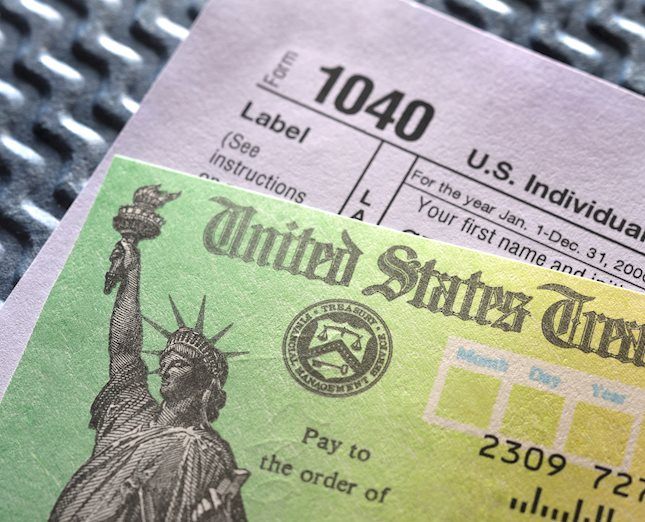- Australian Dollar edges higher despite the US Dollar gaining ground.
- Australian currency declined by 0.06% against the Greenback in 2023.
- China's Caixin Manufacturing PMI improved to 50.8 in December from 50.7 prior.
- Recent US data led the market bias toward the Fed’s dovish stance in early 2024.
The Australian Dollar (AUD) lingers near 0.6830 on Tuesday after a rebound on Friday. The AUD/USD pair experienced a 0.06% decline in 2023, extending its three-year losing streak. However, the pair saw gains in the past two months, attributed to a weaker US Dollar (USD) as there has been a slight dip in United States (US) inflation recently. The easing in US Inflation is leading to market speculation on the US Federal Reserve (Fed) to cut interest rates in early 2024.
Australia’s Dollar demonstrated resilience, fueled by an enhanced risk appetite and robust inflation and housing prices. The recent meeting minutes underscored the Reserve Bank of Australia's (RBA) commitment to scrutinizing additional data to gauge risk balance before deciding on future interest rates. The anticipation that the RBA will probably refrain from a rate cut in the upcoming February policy meeting adds support to maintaining the strength of the Australian Dollar (AUD).
China's Caixin Manufacturing Purchasing Managers Index (PMI) displayed improvement in December, registering a reading of 50.8, surpassing both the market consensus of 50.4 and the previous reading of 50.7. This positive surprise in manufacturing data could potentially bolster the Aussie Dollar (AUD), given the significant trade ties between China and Australia.
The US Dollar Index (DXY) continues to gain ground, but it may encounter challenges again as market participants observed a dip in recent US labor data, Core PCE Inflation, and GDP Annualized. The recent release of the Chicago Purchasing Managers Index by ISM-Chicago on Friday indicated an easing of business conditions across Illinois, Indiana, and Michigan in December.
These indicators validate the notion that the US economy is slowing down in the fourth quarter, signaling a potential soft landing. This reinforces the argument for Fed rate cuts in 2024 and exerts downward pressure on the USD.
Australia's Judo Bank Composite and Services PMI data for December are set to be released on Thursday. On the US docket, Wednesday will be marked by the scrutiny of ISM Manufacturing PMI figures and the Meeting Minutes from the Federal Open Market Committee (FOMC).
Daily Digest Market Movers: Australian Dollar moves sideways as US Dollar improves
- Judo Bank Manufacturing PMI eased to 47.6 in December from the previous reading of 47.8.
- China’s NBS Manufacturing PMI for December reduced to the reading of 49.0 from the previous 49.4 figure. The market expectation was an increase to 49.5. While NBS Non-Manufacturing PMI improved to 50.4 from the 50.2 prior but fell short of the 50.5 expected.
- The Chicago Purchasing Managers Index reduced to 46.9 in December from the previous 55.8.
Technical Analysis: Australian Dollar hovers below major barrier at 0.6850
The Australian Dollar hovers around 0.6830 on Tuesday. The prevailing bullish sentiment could influence the AUD/USD pair to surpass again the major resistance level at 0.6850 following the psychological level of 0.6900. On the downside, the AUD/USD pair could find the key support at the psychological level at 0.6800 aligned with the nine-day Exponential Moving Average (EMA) at 0.6799. A breach below this crucial support zone could potentially lead the AUD/USD pair to navigate the major support at 0.6750 followed by the 23.6% Fibonacci retracement level at 0.6725.
AUD/USD: Daily Chart
Australian Dollar price today
The table below shows the percentage change of Australian Dollar (AUD) against listed major currencies today. Australian Dollar was the strongest against the Swiss Franc.
| USD | EUR | GBP | CAD | AUD | JPY | NZD | CHF | |
| USD | 0.08% | -0.16% | -0.05% | -0.33% | 0.12% | 0.06% | 0.28% | |
| EUR | -0.07% | -0.23% | -0.12% | -0.42% | 0.05% | -0.01% | 0.21% | |
| GBP | 0.16% | 0.26% | 0.13% | -0.20% | 0.29% | 0.22% | 0.41% | |
| CAD | 0.05% | 0.13% | -0.10% | -0.27% | 0.18% | 0.12% | 0.34% | |
| AUD | 0.33% | 0.40% | 0.17% | 0.27% | 0.45% | 0.39% | 0.61% | |
| JPY | -0.14% | -0.04% | -0.29% | -0.17% | -0.45% | -0.06% | 0.16% | |
| NZD | -0.06% | 0.02% | -0.23% | -0.12% | -0.42% | 0.08% | 0.15% | |
| CHF | -0.28% | -0.18% | -0.41% | -0.30% | -0.62% | -0.13% | -0.20% |
The heat map shows percentage changes of major currencies against each other. The base currency is picked from the left column, while the quote currency is picked from the top row. For example, if you pick the Euro from the left column and move along the horizontal line to the Japanese Yen, the percentage change displayed in the box will represent EUR (base)/JPY (quote).
Australian Dollar FAQs
What key factors drive the Australian Dollar?
One of the most significant factors for the Australian Dollar (AUD) is the level of interest rates set by the Reserve Bank of Australia (RBA). Because Australia is a resource-rich country another key driver is the price of its biggest export, Iron Ore. The health of the Chinese economy, its largest trading partner, is a factor, as well as inflation in Australia, its growth rate and Trade Balance. Market sentiment – whether investors are taking on more risky assets (risk-on) or seeking safe-havens (risk-off) – is also a factor, with risk-on positive for AUD.
How do the decisions of the Reserve Bank of Australia impact the Australian Dollar?
The Reserve Bank of Australia (RBA) influences the Australian Dollar (AUD) by setting the level of interest rates that Australian banks can lend to each other. This influences the level of interest rates in the economy as a whole. The main goal of the RBA is to maintain a stable inflation rate of 2-3% by adjusting interest rates up or down. Relatively high interest rates compared to other major central banks support the AUD, and the opposite for relatively low. The RBA can also use quantitative easing and tightening to influence credit conditions, with the former AUD-negative and the latter AUD-positive.
How does the health of the Chinese Economy impact the Australian Dollar?
China is Australia’s largest trading partner so the health of the Chinese economy is a major influence on the value of the Australian Dollar (AUD). When the Chinese economy is doing well it purchases more raw materials, goods and services from Australia, lifting demand for the AUD, and pushing up its value. The opposite is the case when the Chinese economy is not growing as fast as expected. Positive or negative surprises in Chinese growth data, therefore, often have a direct impact on the Australian Dollar and its pairs.
How does the price of Iron Ore impact the Australian Dollar?
Iron Ore is Australia’s largest export, accounting for $118 billion a year according to data from 2021, with China as its primary destination. The price of Iron Ore, therefore, can be a driver of the Australian Dollar. Generally, if the price of Iron Ore rises, AUD also goes up, as aggregate demand for the currency increases. The opposite is the case if the price of Iron Ore falls. Higher Iron Ore prices also tend to result in a greater likelihood of a positive Trade Balance for Australia, which is also positive of the AUD.
How does the Trade Balance impact the Australian Dollar?
The Trade Balance, which is the difference between what a country earns from its exports versus what it pays for its imports, is another factor that can influence the value of the Australian Dollar. If Australia produces highly sought after exports, then its currency will gain in value purely from the surplus demand created from foreign buyers seeking to purchase its exports versus what it spends to purchase imports. Therefore, a positive net Trade Balance strengthens the AUD, with the opposite effect if the Trade Balance is negative.
Information on these pages contains forward-looking statements that involve risks and uncertainties. Markets and instruments profiled on this page are for informational purposes only and should not in any way come across as a recommendation to buy or sell in these assets. You should do your own thorough research before making any investment decisions. FXStreet does not in any way guarantee that this information is free from mistakes, errors, or material misstatements. It also does not guarantee that this information is of a timely nature. Investing in Open Markets involves a great deal of risk, including the loss of all or a portion of your investment, as well as emotional distress. All risks, losses and costs associated with investing, including total loss of principal, are your responsibility. The views and opinions expressed in this article are those of the authors and do not necessarily reflect the official policy or position of FXStreet nor its advertisers. The author will not be held responsible for information that is found at the end of links posted on this page.
If not otherwise explicitly mentioned in the body of the article, at the time of writing, the author has no position in any stock mentioned in this article and no business relationship with any company mentioned. The author has not received compensation for writing this article, other than from FXStreet.
FXStreet and the author do not provide personalized recommendations. The author makes no representations as to the accuracy, completeness, or suitability of this information. FXStreet and the author will not be liable for any errors, omissions or any losses, injuries or damages arising from this information and its display or use. Errors and omissions excepted.
The author and FXStreet are not registered investment advisors and nothing in this article is intended to be investment advice.
Recommended content
Editors’ Picks

EUR/USD drops below 1.0500 after US PMI data
EUR/USD stays under bearish pressure and trades below 1.0500 on Monday. The upbeat ISM Manufacturing PMI data for November provides an additional boost to the US Dollar, forcing the pair to extend its slide in the American session.

GBP/USD slumps below 1.2650 on broad USD strength
Following a consolidation phase in the early European session, GBP/USD turns south and trades below 1.2650 on Monday. The pickup in the safe-haven demand for the US Dollar, in addition to the better-than-forecast US Manufacturing PMI data, weighs on the pair.

Gold stays below $2,650 as US yields push higher
Gold starts the new week on the back foot and trades below $2,650. The renewed US Dollar strength and the recovery seen in the US Treasury bond yields don't allow the pair to stage a rebound despite the risk-averse market atmosphere.

The week ahead: Payrolls take centre stage, as French government poised to collapse
At the start of this week, the focus is likely to be on France. On Sunday, Marine Le Pen said that her party’s talks with the government led by Michel Barnier, had broken down, which paves the way for a no-confidence vote in the technocratic government that has no majority in Parliament.

Trump warns BRICS over Dollar rival plans
Donald Trump, the incoming U.S. President, has issued a strong warning to BRICS nations over their plans to challenge the dominance of the U.S. dollar in global trade.

Best Forex Brokers with Low Spreads
VERIFIED Low spreads are crucial for reducing trading costs. Explore top Forex brokers offering competitive spreads and high leverage. Compare options for EUR/USD, GBP/USD, USD/JPY, and Gold.
-638397603445764207.png)